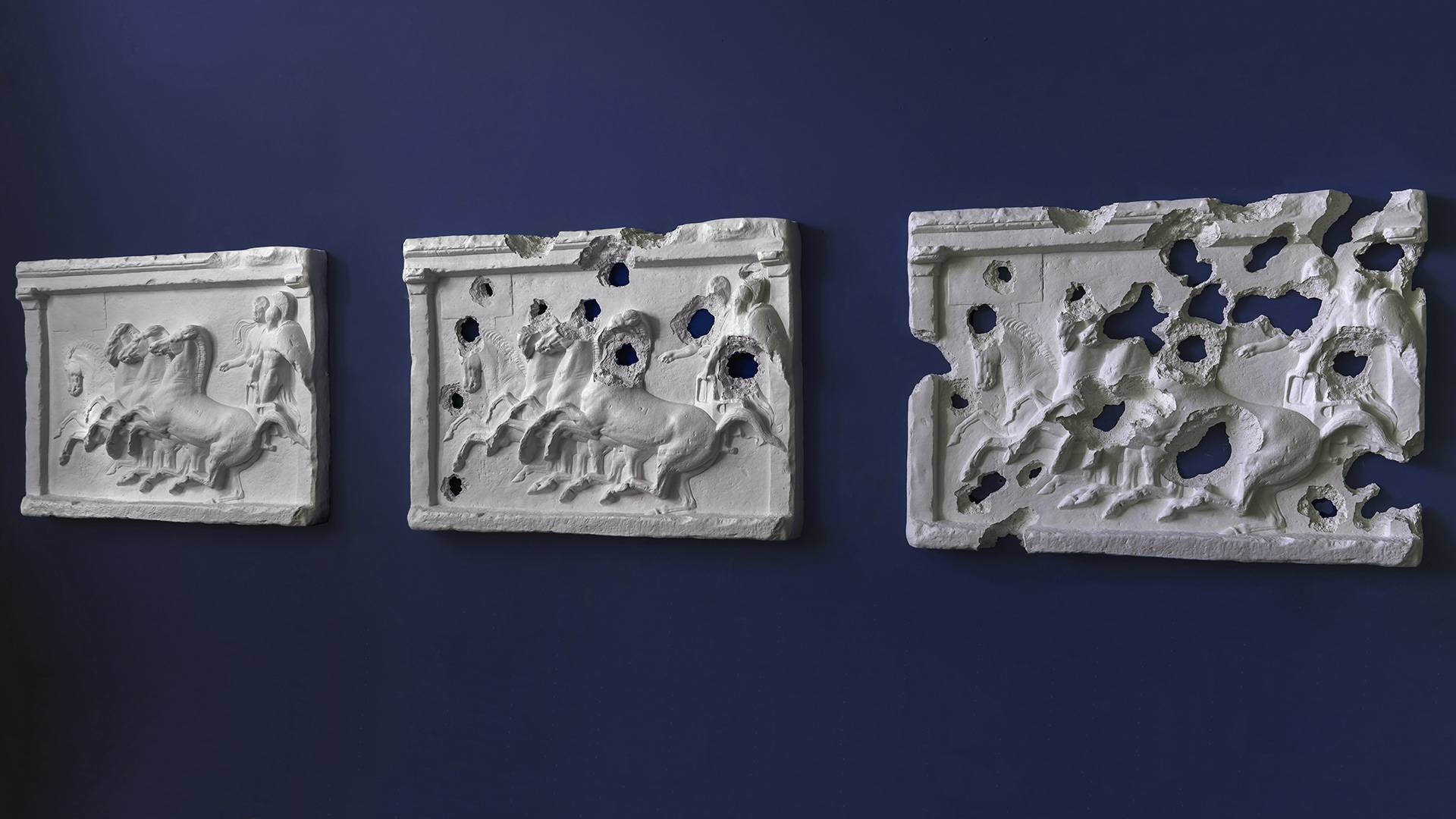Artist documents destruction of Iraqi, Kurdish culture in exhibition at UHCL
July 16, 2019 | UHCL Staff

Piers Secunda is an New York-based British artist who doesn’t use paintbrushes, so
don’t expect to see anything on a canvas or piece of paper at his exhibitions. As
an artist, he’s focused on using paint as the medium with which to capture the marks
and the textures of violence inflicted by ISIS on Kurdish and Iraqi culture over the
last decade. Secunda’s work, titled “ISIS Bullet Hole Paintings,” will be on exhibition
in the Art Gallery at University of Houston-Clear Lake from Sept. 12-Dec. 18.
The exhibition includes paintings, drawing and artifacts, including an Arabic-language
Christian prayer book that was partially burned by ISIS in Qarakosh, Iraq, and a traditional
handwoven Kurdish shepherd’s bag, on loan from an Iraqi museum. This is the first
loan from a museum in Iraq to an institution outside the country’s borders since the
late 1980s.
Secunda uses the paint to create casts, or moldings, to meticulously craft a disconcerting
record of the destruction of ancient art that ISIS has wrought upon the Middle East,
specifically in Iraq. “I started a long time ago to make paintings in an untraditional
way,” Secunda said. “The history of painting is about applying paint to render an
image. I think that’s very limiting. Painting has existed for tens of thousands of
years, and that’s a lot of baggage. It’s hard to innovate after that much time.”
He has developed ways to remove the canvas and deal with the paint on its own, as
a sculptural material. “Paint doesn’t need a canvas. It can function entirely on its
own. You can use it the same way as bricks,” he said. “It enables me to construct
forms or structures. I produce these forms, then break them down and hold them together
with nuts and bolts. When I take it out and put it on the wall, it’s a painting because
it’s made out of paint, nothing else.”
This is how, Secunda said, he creates his work about the “noise of the world. I’m
very interested in geopolitics and the line in the sand, beyond which civil behavior
stops and something else takes over,” he said. "When the Taliban destroyed the Bamiyan
Buddhas in Afghanistan, I was already making work about the destruction of culture.
When ISIS started destroying ancient sites on an industrial scale in Iraq, I knew
it was too big to ignore. It’s been at the top of my agenda since 2014.
"I’ve always felt the most important thing an artist can do is to say something about
the time in which they are alive.”
He explained that, for some time, his work has attempted to bring into this somewhat
peculiar way of painting, what happens when one finds oneself on the wrong side of
that line. “ISIS set about systematically destroying ancient sites all over Iraq,
erasing our collective human past,” he said. “In doing so, they have desecrated museums,
destroyed ancient sites and objects of cultural importance that help us understand
where civilization came from. My work examines that destruction of culture.”
For Secunda, the fire at the cathedral of Notre Dame in Paris this past April is a
case in point. “People came forward and pledged extraordinary amounts of money to
restore the spire,” he said. “When things like that are damaged, we go out of our
way to repair them. In Iraq, it’s almost impossible. The damage is on such an epic
scale.”
The more he thought about this extensive cultural damage, Secunda said, the more he
realized that if he had to document it; it was too big to ignore.
“We see everything through the prism of the cell phone or TV screen, and we can’t
connect with it emotionally; we’re detached,” he said. “If you see the damage to these
ancient works of art with your own eyes, on a granular level and not through a TV
screen, there’s a reverberation from it. The power of the object, even if it’s damaged,
carries itself. You feel it.”
Secunda said he travels to places where ISIS has done its worst, and molded objects
that have been destroyed by sledgehammers, bullets, power tools or fire. “I’ll leave
a site with 30 or 40 molds in a bag and take them back to my studio,” he said. “I
don’t make the bullet holes. ISIS has done that. I’m effectively documenting what
it looks like and integrating it into works of art. You’re faced with a very high
level, forensic quality reproduction of the damage. It’s a document of what happened.”
Secunda will attend the opening of the exhibition Thursday, Sept. 12, 5-7 p.m. Find
out more on the UHCL Art Gallery webpage.
About the Author:
Recent entries by
October 18 2022
Better technology transforms campus safety: Police Chief demonstrates SafeZone to students
October 14 2022
Student's skill with drones takes chicken turtle research to new heights
October 11 2022
Planting event to help UHCL restore native plants to campus, support environmental sustainability







